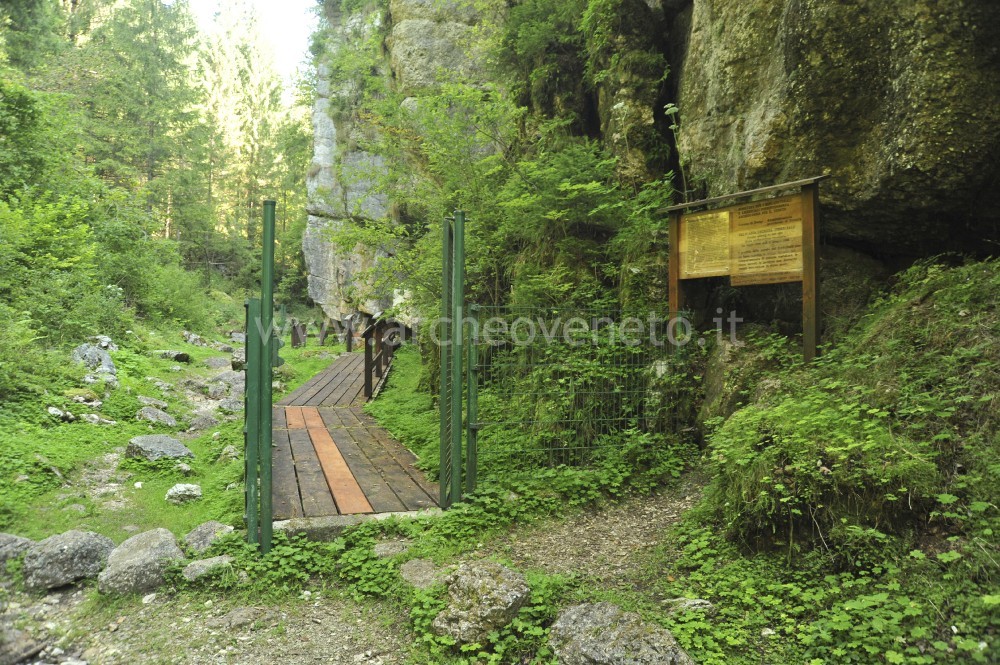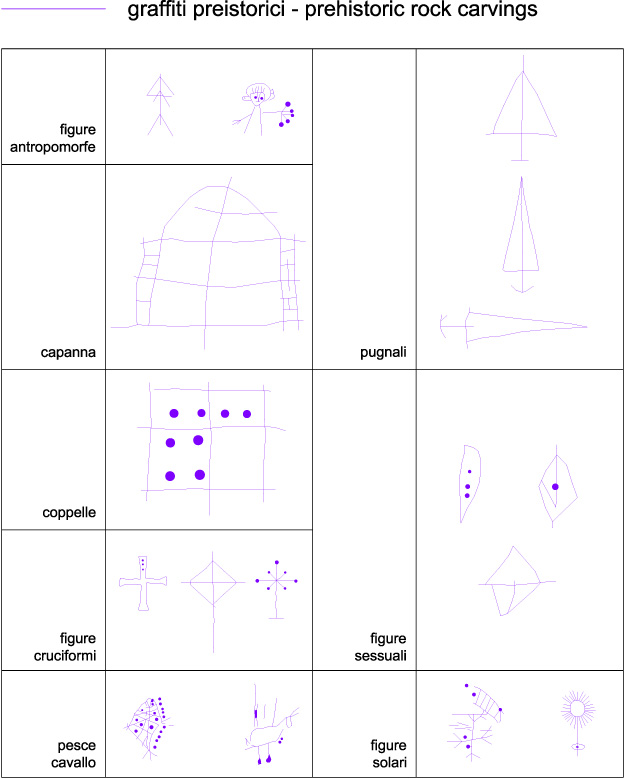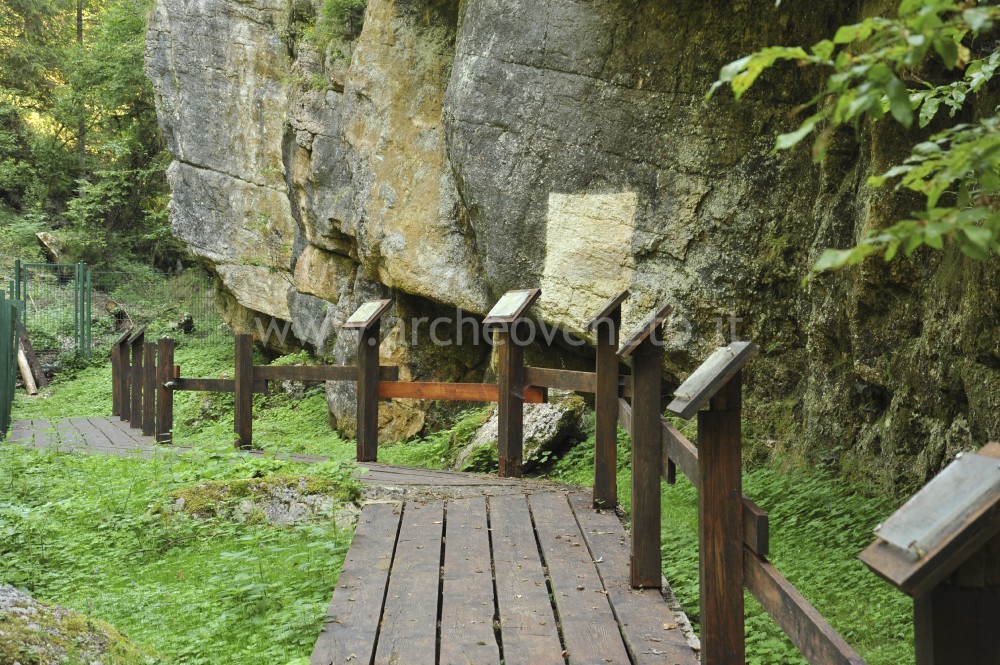| Locality Tunkelbald - 36010 Roana (VI)
|
|
|
Summary
The archaeological area displays some rock engravings dating back to the I millennium B.C. The engravings mainly represent anthropomorphic and theomorphic images as well as symbols of the sun.History of research
The rock engravings were discovered in 1981, after an exceptional flood of the Assa stream removed the alluvial deposits from the shore and redefined the waterway in its current shape.
Urban and geographical context
On the western side of the plateau “Altopiano dei Sette Comuni” there are many valleys. The deepest one is the Assa valley, which starts at the Vezzena pass and which tortuously heads first to the south, then to the west where it flows into the Astico valley. At the bottom of the Assa valley, along the river shore and on a rock unit of “Ammonitico Rosso”, we can see the rock engravings, the object of this visit.
Chronology
X B.C. (end) and Medieval times |
 |  |
|
Visiting
Admission: Su prenotazione;
Visitability: Esterno e Interno;
Ticket: No;
 School accessUpon reservation School accessUpon reservation
|
Recommended tour time (minutes): 60 |
|
Services for visitors
 Rest points Rest pointsPicnic area |
Educational Services
 Information boards Information boards Guided Tours Guided Tours Guided tours by the society "Archeidos", tel. 0424 691100 / 0444 594317, www.archeidos.it, and by the archaeological group “Ass Taal”, tel. 0424 692282  Educational activities Educational activitiesTeaching activities by the society "Archeidos", tel. 0424 691100 / 0444 594317, www.archeidos.it, and by the archaeological group “Ass Taal”, tel. 0424 692282  Educational workshops Educational workshopsTeaching room  Library and documentation centre Library and documentation centre |
Bibliography
| Leonardi P., Rigoni G., Allegranzi A. 1982, Le incisioni rupestri della Val d'Assa sull'Altipiano dei Sette Comuni (Vicenza, Italia), in Preistoria Alpina, 18, pp. 175-190. |
| Arcà A., Fossati A., Marchi E., Tognoni E. 2001, Le ultime ricerche della Cooperativa "Le Orme dell'Uomo" sull'arte rupestre delle Alpi, in Archeologia e arte rupestre. L'Europa, le Alpi, la Valcamonica, Atti del Secondo Convegno Internazionale di Archeologia Rupestre (Darfo Boario Terme, 2-5 ottobre 1997), Milano, pp. 143-146. |
| Bonetto J. 2009, Veneto (Archeologia delle Regioni d'Italia), Roma, pp. 470-471. |
